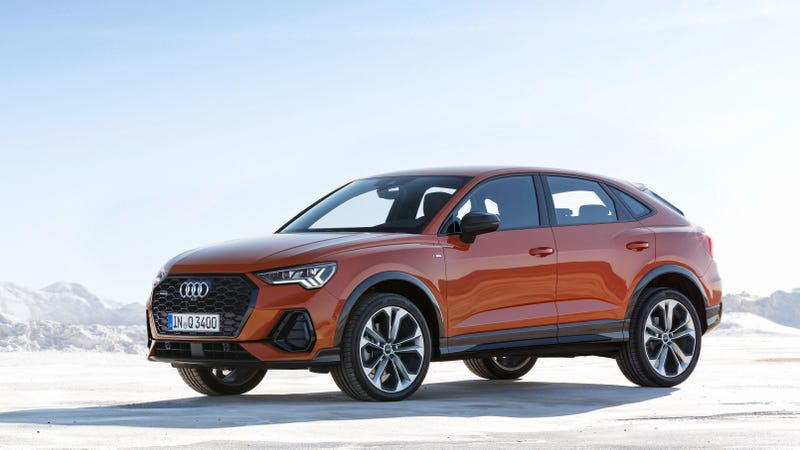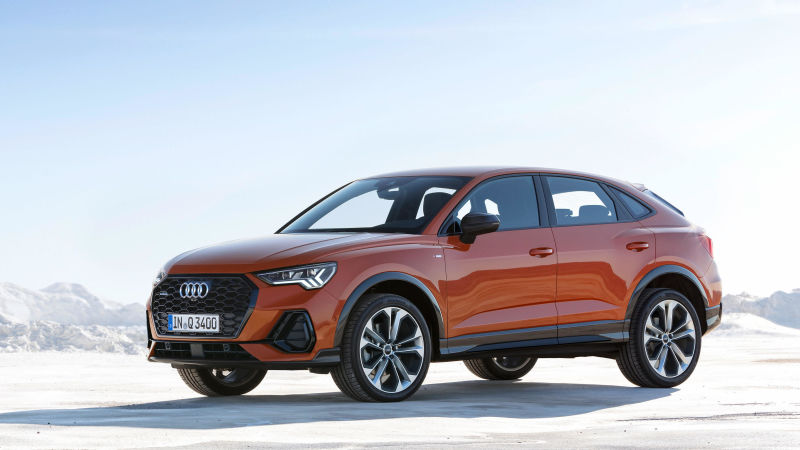
Have you ever been in an Audi Q3 and thought that the daylight opening of the greenhouse could stand to be incrementally smaller and that it needed a roofline to provide slightly worse rear seat headroom? You’re absolutely in luck, pal! Audi has just the car for you in the Q3 Sportback.

The Sportback has been lengthened by about 2/3rds of an inch over its standard Q3 stablemate, and it sits about 1.1 inches shorter while width remains the same. This is the new car equivalent of 1950s hot rodding, if hot rodders chopped 1.1 inches out of the roof and left the rest of the car exactly as it was before. There’s not much change going on between the standard Q3 and the Sportback version.

Advertisement
The interior of the Sportback is unchanged from the standard model, except for the lowered roof and the corresponding smaller storage capacity and headroom.

Advertisement
On the outside you get a very similar design, except the D-pillar window is smaller, and the pillar itself is angled slightly more aggressively. I’m honestly not sure I could tell which one it was if I saw a Q3 parked in a grocery store lot.

Advertisement
Some of the trim appears to be slightly different, as the Sportback has grey trim where the standard model has body-colored trim. Likewise, much of the standard car’s metal trim, like that around the windows or the grille, has been swapped to black.

Advertisement
The Q3 Sportback is available from the launch as a Sportback 45 TFSI quattro S tronic with a 2.0-liter turbo inline four making 226 hp. The car will also be available with two 2.0-liter diesels making 147 hp and 187 hp respectively, which are unlikely to make it to the U.S. market. Similarly, a manual transmission will be available, but probably not for us.

Advertisement
Interestingly, the Q3 Sportback will be available with a 1.5-liter turbocharged gasoline motor paired with a 48V mild hybrid system. Apparently this hybrid system will help the small CUV save as much as “0.4 l of fuel per 100 km in real life driving” which I think amounts to saving one gallon of fuel for every 620-ish miles driven. Check the math on that.
What’s the point?
I guess that same question could be asked of this car as a whole, as well.













